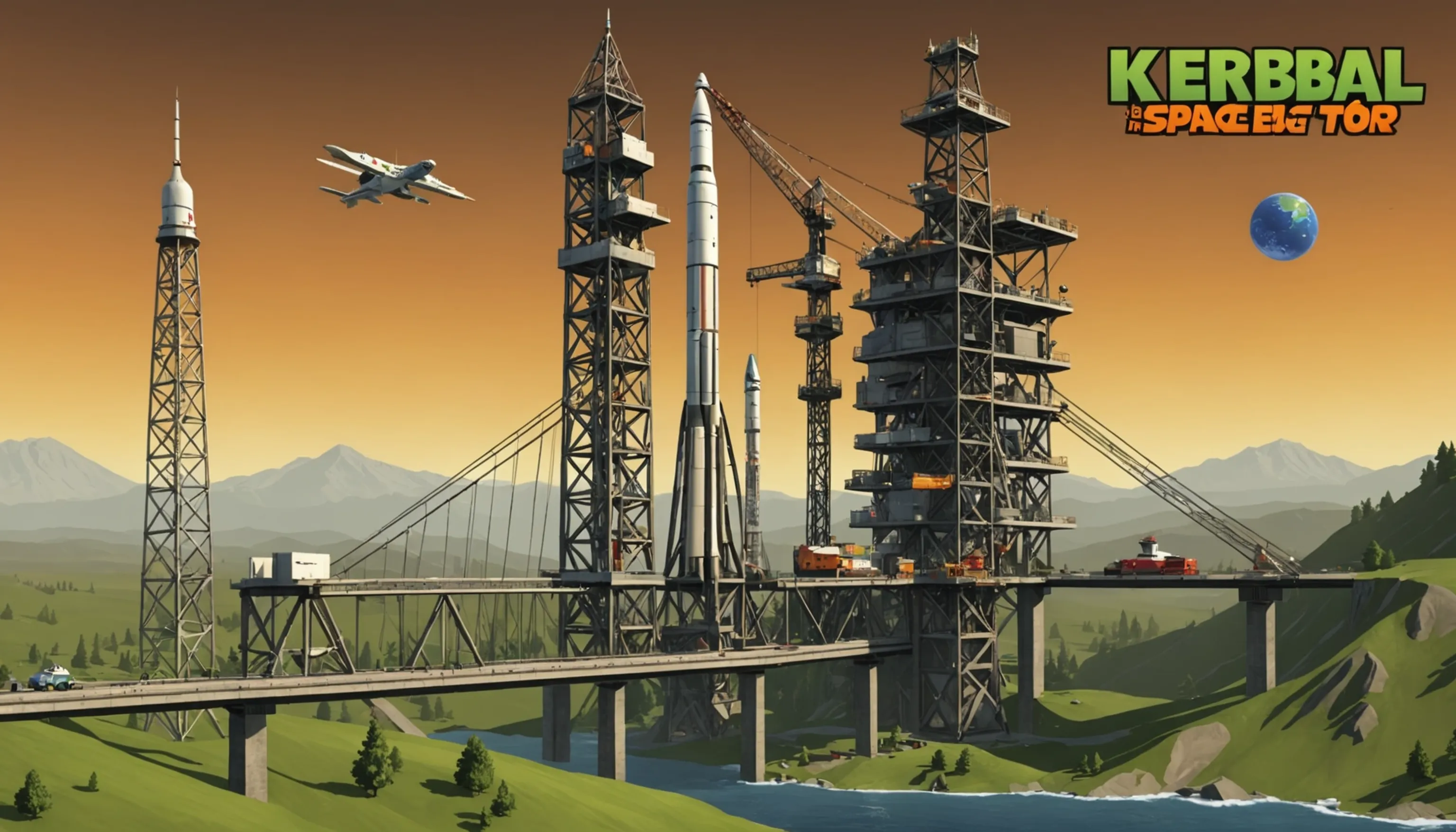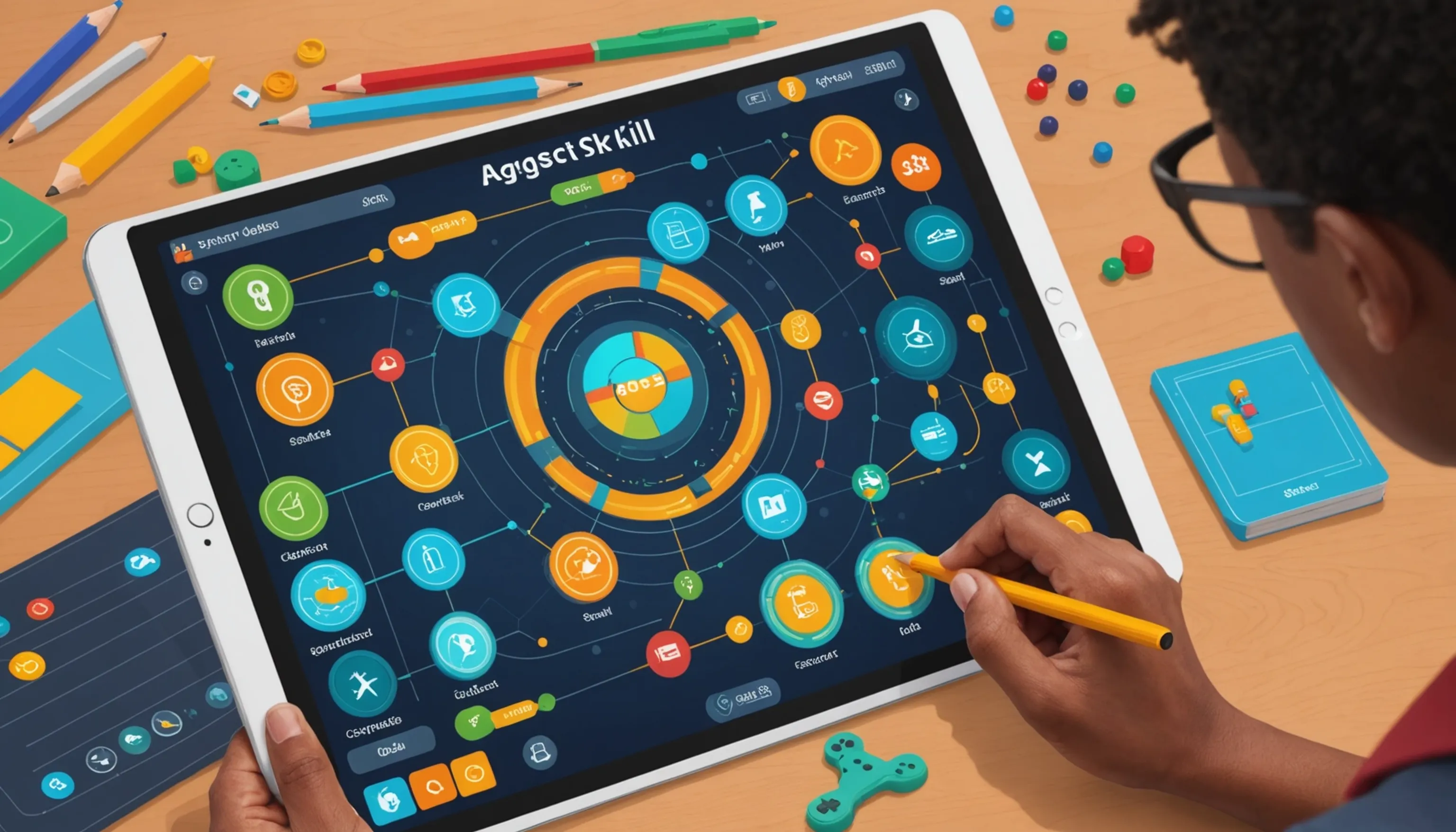Top Physics Games for Teens
 HvWHenry van Wagenberg
HvWHenry van Wagenberg
Top Physics Games for Teens
When it comes to physics games for teens, several titles stand out for their engaging gameplay and educational value. These games not only entertain but also reinforce key concepts in physics through interactive challenges. Some top picks include:
- Kerbal Space Program – A game where players build and manage their own space program, teaching rocket science and orbital mechanics.
- Bridge Constructor – Players design bridges to allow vehicles to cross, which helps understand forces and structural engineering.
- World of Goo – This game involves building structures with balls of goo, emphasizing gravity and physics principles.
These games make learning physics enjoyable while promoting critical thinking skills.
Why Physics Games are Beneficial for Learning
Physics games offer numerous benefits for learning, especially for teenagers. These games create an interactive environment where players can experiment with physical principles in a fun and engaging way. By incorporating elements of play, they make complex concepts more accessible and enjoyable.
One of the primary advantages of physics games is their ability to promote critical thinking. As players tackle challenges, they must apply their knowledge of physics to solve problems. This hands-on experience encourages them to think creatively and develop solutions based on trial and error.
Additionally, these games often require players to engage in strategic planning. For example, when constructing bridges in games like Bridge Constructor, players must consider the weight of vehicles and the forces acting on their structures. This not only reinforces physics concepts but also fosters skills such as problem-solving and decision-making.
Moreover, physics games can enhance collaborative learning. Many of these games allow for multiplayer options, encouraging teamwork and communication among peers. This social aspect adds another layer of learning, as students share ideas and strategies while playing together.
Lastly, the enjoyment factor cannot be overlooked. When students find learning fun, they are more likely to remain engaged and motivated. Physics games create a positive learning atmosphere that can lead to a deeper understanding of the subject matter, making them a valuable tool for educators and parents alike.

Popular Physics Games to Try
When it comes to engaging and educational physics games for teens, several popular titles stand out. These games not only entertain but also reinforce essential physics concepts while encouraging critical thinking and creativity. Here are some top picks:
- Kerbal Space Program: In this game, players manage their own space program, designing and launching spacecraft to explore celestial bodies. It teaches principles of rocket science and orbital mechanics, allowing players to experiment with physics in a virtual space environment.
- Bridge Constructor: This construction puzzle game challenges players to build bridges that can withstand the weight of vehicles. It helps players understand forces, tension, and structural integrity while promoting problem-solving skills.
- World of Goo: A unique physics-based puzzle game where players build structures using balls of goo. This game emphasizes gravity, motion, and the importance of balance, all while providing a fun and engaging experience.
- SimpleRockets 2: Players design and launch rockets, exploring various planets and moons. This game helps users grasp concepts of propulsion, aerodynamics, and space travel.
- Crayon Physics Deluxe: A creative puzzle game where players draw objects to solve challenges. It encourages innovation and allows players to explore physics principles such as gravity and motion in a fun way.
These games provide a fantastic way for teens to learn physics concepts while enjoying their gaming experience, making them perfect for both education and entertainment.
How to Choose the Right Physics Game
Choosing the right physics game for teens involves considering several key factors. First, assess the age and skill level of the player; some games are designed for younger audiences while others target more advanced users. Next, evaluate the educational value of the game. Look for titles that incorporate real physics principles and promote critical thinking. Additionally, consider the engagement and fun factor. A game that captures attention and encourages exploration will make learning more effective. Finally, check for interactive learning features that enhance the overall experience, making physics concepts relatable and exciting.

Consider the Age and Skill Level
When selecting a physics game for teens, one of the most crucial factors to consider is the age and skill level of the player. Different games are tailored to various age groups and skill sets, making it essential to choose a title that aligns with the player's capabilities. A game that is too easy may not provide enough challenge, leading to boredom, while one that is too difficult can result in frustration.
For younger teens, look for games that incorporate basic physics concepts in a fun and engaging manner. Titles like Crayon Physics Deluxe use creativity and simple mechanics to introduce players to fundamental principles without overwhelming them. These games often feature intuitive gameplay that encourages exploration and experimentation.
For older teens or those with a stronger background in science, consider games like Kerbal Space Program or Bridge Constructor, which delve into more complex physics concepts such as aerodynamics, structural integrity, and rocket science. These games challenge players to apply their knowledge, promoting deeper understanding and critical thinking.
It’s also important to check the game's difficulty settings. Many physics games offer adjustable levels, allowing players to start at a comfortable pace and gradually increase the challenge as they improve their skills. This flexibility ensures that players remain engaged and motivated as they progress.
By considering age and skill level, you can select the right physics game that not only entertains but also enhances learning and understanding.
Look for Educational Value
When selecting a physics game for teens, it’s essential to look for its educational value. Not all games are created equal, and some may prioritize entertainment over learning. A game with substantial educational content can enhance a teen's understanding of physics concepts while keeping them engaged.
Start by examining the core mechanics of the game. Does it require players to apply principles of physics, such as gravity, force, or motion? For example, games like Kerbal Space Program not only entertain but also teach players about rocket science and orbital mechanics, allowing them to experiment with real-world physics scenarios. Players learn through trial and error, gaining insights into complex concepts.
Additionally, consider how the game presents challenges. Are players encouraged to think critically and solve problems? Games like Bridge Constructor require players to design bridges that can withstand various forces, fostering an understanding of engineering and structural integrity. This type of gameplay encourages strategic thinking and planning.
Moreover, a game that incorporates interactive learning features can significantly enhance its educational value. Look for titles that offer tutorials, progress tracking, or in-game feedback, as these elements help reinforce learning. A game that adapts to the player's skill level can also provide a tailored educational experience, making it easier for teens to grasp new concepts.
By prioritizing educational value, you can select physics games that provide meaningful learning experiences while remaining enjoyable.
Engagement and Fun Factor
When choosing a physics game for teens, the engagement and fun factor are vital considerations. Games that are enjoyable and interactive keep players interested and motivated to learn. Look for titles that feature captivating storylines, colorful graphics, and dynamic gameplay. Engaging games often incorporate challenges that encourage players to think critically while having fun.
For example, games like World of Goo blend physics concepts with innovative puzzles, making learning feel like an adventure. When players enjoy the experience, they are more likely to retain information and develop a passion for physics.
Games That Encourage Critical Thinking
Choosing physics games that encourage critical thinking is essential for fostering problem-solving skills in teens. These games challenge players to analyze situations, devise strategies, and apply physics principles to overcome obstacles. By engaging in such gameplay, students enhance their analytical abilities while deepening their understanding of complex concepts.
One excellent example is Portal 2, a puzzle-platform game that requires players to use portals to navigate through various challenges. Players must think critically about how to manipulate their environment and use physics concepts like momentum and gravity to solve puzzles. This game not only entertains but also promotes logical reasoning and spatial awareness.
Another game that encourages critical thinking is Human: Fall Flat. In this physics-based puzzle game, players control a customizable human character and must navigate through levels filled with obstacles. The open-ended nature of the game allows for multiple solutions to problems, pushing players to experiment with different approaches and think outside the box.
Additionally, games like Factorio require players to build and manage factories while optimizing production processes. This game demands critical thinking and strategic planning, as players must analyze resource flows and design efficient systems while considering physics principles.
Ultimately, games that stimulate critical thinking not only make learning more enjoyable but also equip teens with essential skills that extend beyond the gaming experience, preparing them for real-world challenges.
Games with Interactive Learning Features
Games with interactive learning features play a crucial role in enhancing the educational experience for teens interested in physics. These features actively engage players, making learning more dynamic and enjoyable. By incorporating elements that require participation, such games help solidify understanding and promote retention of complex concepts.
One exemplary game is Physics Playground, where players can experiment with various physics concepts in a sandbox environment. This game allows players to manipulate objects, test forces, and observe outcomes in real-time, providing immediate feedback and a hands-on learning experience. The interactive nature encourages exploration and experimentation, essential for grasping physics principles.
Another great option is Little Big Planet, a puzzle-platformer that combines creativity with physics-based challenges. Players create their own levels and puzzles, integrating physics mechanics like gravity and tension. This interactive feature not only fosters creativity but also requires players to apply their knowledge of physics to design engaging gameplay experiences.
Additionally, games like SimCity allow players to build and manage cities while addressing real-world physics challenges. Players must consider the impact of structures, traffic flow, and environmental factors, providing a comprehensive understanding of urban planning through interactive gameplay.
In summary, games with interactive learning features offer an engaging way for teens to explore physics concepts. By making learning active and enjoyable, these games enhance critical thinking and promote a deeper understanding of the subject matter, making them invaluable educational tools.
